A few years back, AI was just merely a concept and looked cool over sci-fi movies and series. What was once sci-fi fantasy is now an enterprise reality. Wonderful, isn’t it?
We all had wished to have such AI assistance or bot in our lives.
Now, we can say we accomplished that dream to build ai app.
From Fortune 500 organizations to fast-scaling startups, every company is racing towards acquiring & incorporating AI-powered applications that would not only automate workflows, but will also drive real-time decision making, customized customer experiences, and predictive business outcomes.
What’s driving this change? Any clues?
Well, it’s called – COMPETITIVE URGENCY.
Table of Contents:
- CXO Pain Points in AI App Development
- Why CXOs Need a New Approach to AI App Development
- Why Snowflake is Built for AI App Development
- Step-by-Step Guide: Building an AI App on Snowflake
- CXO-Focused Tips for AI App Strategy
- Conclusion: Drive Real Business Value with AI Apps on Snowflake
- FAQs: AI Apps with Snowflake
Organizations, in every domain/industry/sector, have already started embedding AI into core products, operations, and services on a scale. However, to build ai app, many organizations end up hitting many walls such as fragmented data, lengthy development cycles, and insufficient scalable infrastructure.
The result? AI initiatives that look good on paper but break down in production.
No longer just a data warehouse, Snowflake has evolved into a unified platform, combining data, AI, and app development for modern enterprises.
Snowflake allows teams to develop & deploy AI-native applications directly on top of the governed, secure data. It also permits every stakeholder to coordinate, speed time-to-value, and scale AI apps with confidence.
CXOs Pain Points in AI App Development
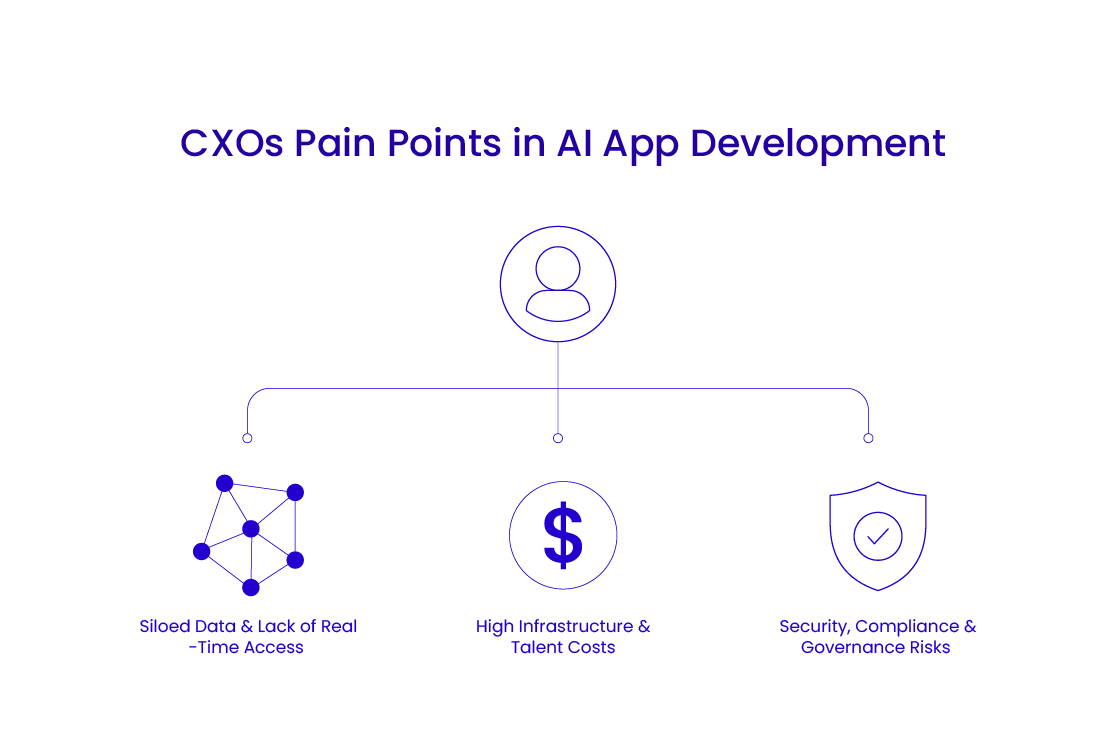
Siloed Data & Lack of Real-Time Access
Today, most enterprises operate with data scattered across dozens of systems including CRMs, ERPs, third-party APIs, data lakes, SaaS platforms, and legacy databases.
Teams are forced to develop complex ETL (Extract, Transform, Load) pipelines to transport data into one place. These pipelines are usually time-consuming and brittle, often ending out of sync with real-time operations.
High Infrastructure & Talent Costs
Building enterprise-grade AI applications is resource-intensive by default. It demands an advanced tech stack with GPUs, distributed computing frameworks, scalable storage, and low-latency APIs.
On top of that, organizations need highly skilled data engineers, ML specialists, MLOps professionals, DevOps, and security experts to stitch everything together to build ai app, maintain it while ensuring compliance.
This leads to two major cost centers:
-
Infrastructure Overheads: Provisioning cloud VMs, setting up clusters, handling peak workloads, managing runtime environments, and optimizing resource utilization all incur significant costs.
-
Talent Gaps and Hiring Costs: The global shortage of AI and cloud engineering talent means top professionals come at a premium and still may take months to go onboard.
Security, Compliance & Governance Risks
While the potential of AI applications is enormous, so are the risks associated with data privacy, regulatory compliance, and governance. In highly regulated industries like healthcare, finance, and government, even the perception of a data mishap can have serious legal and reputational consequences.
Why CXOs Need a New Approach to AI App Development
The pressure on CXOs to operate AI has never been great but so are the roadblocks standing in the way.
From siloed data systems that delay insights, to skyrocketing infrastructure and talent costs, to compliance concerns stall innovation, the traditional path to AI app development is riddled with inefficiencies, complexity, and risk.
By converging data, AI, and application development on a single governed platform, Snowflake empowers CXOs to eliminate friction, cut costs, and de-risk innovation—so they can explore the full potential of enterprise AI.
Why Snowflake is Built for AI App Development
Snowflake redefines the way you plan to build an app with ai entirely. It brings data, AI, and applications together on a single governed, cloud-native platform, helping enterprises eliminate complexity while maximizing performance, security, and scalability.
Data + AI + Apps on One Platform
At the heart of every successful AI application lies seamless interaction between data processing, model intelligence, and interactive interfaces.
-
Native ML Capabilities: Snowflake provides built-in support for model training, inference, and hosting directly on the platform.
-
Snowpark: Snowflake’s developer framework that allows Python, Java, and Scala workloads to run natively where the data lives.
-
Streamlit Integration: Snowflake’s native support for Streamlit lets developers build interactive, low-latency apps directly within the data environment
-
Snowflake Cortex: With the introduction of Cortex, Snowflake brings pre-built LLMs, vector embeddings, and natural language processing tools enabling users to quickly integrate to build an ai app.
Scalable & Cloud-Agnostic
AI apps don’t just need intelligence—they need scale and flexibility. Whether you are supporting thousands or millions of users, the underlying infrastructure must be elastic, reliable, and free from vendor constraints.
-
Run your AI workloads on AWS, Azure, or Google Cloud without changing your architecture.
-
Snowflake’s architecture automatically scales compute resources based on demand, supporting high-concurrency workloads, spikes in user traffic, and dynamic resource allocation.
-
Deploy applications closer to users across global cloud regions while maintaining consistent performance and compliance with local data regulations.
AI-Optimized Architecture
AI isn’t an afterthought in Snowflake—it’s part of the core DNA. The platform includes AI-native capabilities that streamline development for everything from predictive analytics to gen AI applications.
-
LLM & RAG Ready: Snowflake’s built-in support for large language models (LLMs), Retrieval-Augmented Generation (RAG), and vector search enables developers to create sophisticated generative AI apps with contextual awareness—right where the data lives.
-
First-Class Language Support: Work with Python, SQL, Java, and custom Snowpark APIs, allowing teams to use the languages they’re already proficient in, reducing friction in cross-functional AI collaboration.
-
Vector Data & Embeddings: With native vector data types, Snowflake simplifies similarity search, embedding storage, and LLM integration for tasks like semantic search & recommendation engines.
-
Secure ML Pipelines: From feature engineering to inference, Snowflake offers a secure, governed pipeline that aligns with enterprise requirements around access control, encryption, and auditing.
Step-by-Step Guide: Build An AI App on Snowflake
Unlike traditional development pipelines that require wrangling multiple tools, environments, and infrastructure, Snowflake streamlines the AI app development lifecycle into a seamless, governed workflow.
With native integrations for data prep, model development, application deployment, and monitoring, it enables teams to go from idea to impact, all within a single platform.
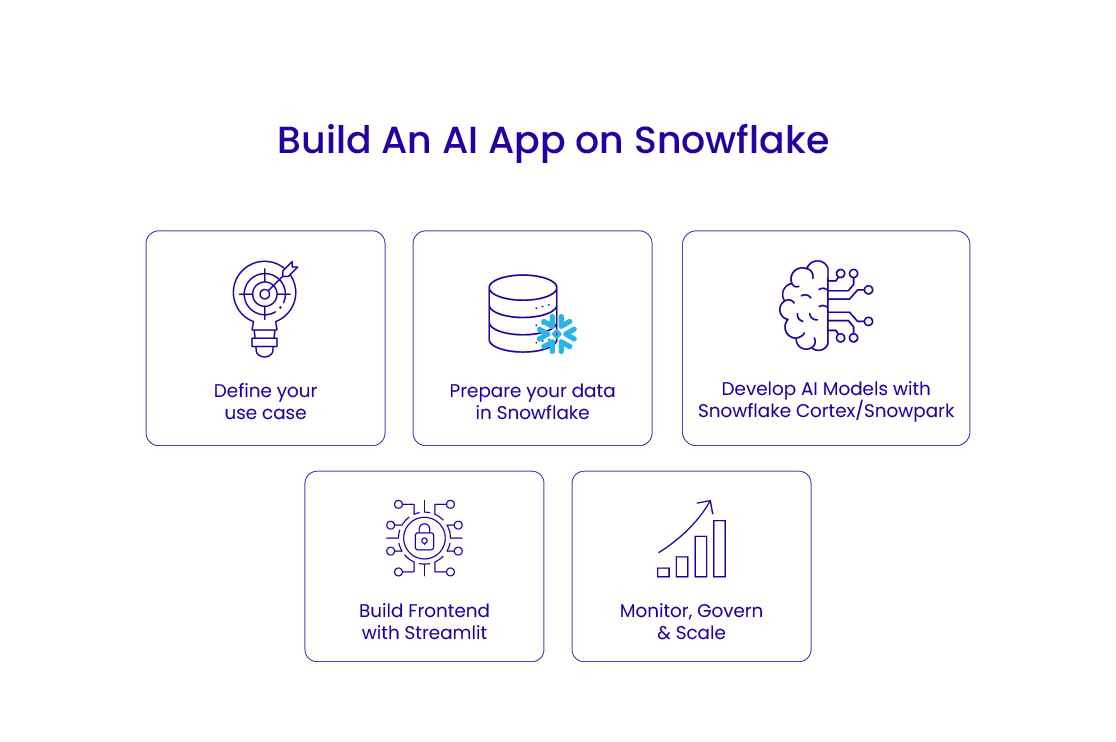
Here’s a step-by-step breakdown of how to build ai app on Snowflake:
Define your use case: Identify the problems you aim to solve, who are the end users, what data will fuel your AI models, and what kind of predictions or actions the app will deliver.
Prepare your data in Snowflake: Consolidate and transform your data. It can be done through ingestion of data using Snowflake’s tools such as Fivetran, Informatica, and Matillion to accumulate structured, semi-structured, and unstructured data.
Develop AI Models with Snowflake Cortex/Snowpark: You can use Snowpark to develop machine learning models directly in Snowflake using Python & other similar languages. Also, Snowflake Cortex can be used for pre-built LLMs, embeddings, sentiment evaluation, predicting, and other generative AI features.
Build Frontend with Streamlit: You can opt for the ideal combination of Streamlit & Snowflake for interactive AI applications. Streamlit is now integrated into Snowflake, allowing you to build web apps and dashboards in Python with no front-end expertise required.
Monitor, Govern & Scale: Once deployed, your AI app needs to be managed and scaled like every other enterprise software asset. You need to use Snowflake’s observability tools to monitor app behavior, resource utilization, user interactions, and cost.
Recommended Reading:
- AI’s Role in Revolutionizing the Fintech Industry
- The New Highway for Enterprise AI: Inside Snowflake’s Openflow Revolution
- Snowflake Cortex Agents: Scalable AI for Enterprise Data Insights
- Generative AI for Everyone: The No-Code Movement Powered by Snowflake
- Generative AI, Real Returns — How C-Suite Leaders Are Turning Innovation into ROI
- Your AI Is Only as Smart as Your Metadata
CXO-Focused Tips for AI App Strategy
For CXOs, to build an app with ai is no longer just an IT initiative, it’s a strategic business imperative. But with high stakes, tight budgets, and growing regulatory scrutiny, success depends on making smart, future-proof choices from day one.
Here are four CXO-focused strategic tips to ensure your AI app initiatives drive measurable ROI while staying agile and compliant:
Start Small but Build on a Scalable Foundation
Invest in a platform like Snowflake that allows you to seamlessly move from a single AI use case to organization-wide adoption.
Prioritize Secure-by-Design Architecture
CXOs must demand a secure-by-design approach, where data encryption, access controls, lineage tracking, and compliance checks are baked into every layer of the AI workflow.
Leverage Composable Apps for Modular Expansion
Adopt a composable app strategy. Using Snowflake’s Streamlit and Snowpark, you can build modular AI components that can later be integrated or reused across other business apps.
Train Business Users Alongside Data Teams
CXOs should bridge the gap between new technologies and the employee’s expertise. They should invest to ensure all employees are trained with basic AI literacy.
The CXO Advantage
By starting small, securing early, staying modular, and enabling cross-functional teams, CXOs can move beyond experimentation and create AI apps that deliver tangible, scalable business value. Platforms like Snowflake openflow simplify this strategy easier to execute by combining data, AI, and app development on a single governed foundation.
Conclusion: Drive Real Business Value with AI Apps on Snowflake
Snowflake enables enterprises to accelerate innovation by reducing development complexity, reduce costs with serverless, cloud-agnostic infrastructure, build trust with built-in governance and regulatory compliance, and scale AI apps globally.
For CXOs, the message is clear: AI strategy to execution and its success isn’t about chasing the newest models—it’s about building on the right foundation.
FAQs: AI Apps with Snowflake
Can I build apps without deep AI/ML expertise?Yes. Snowflake’s Cortex offers pre-built LLMs and ML functions accessible via SQL or Python, while Streamlit lets you create interactive apps with minimal coding. Advanced users can leverage Snowpark for custom model development.
What use cases are best suited for Snowflake AI apps?Ideal for predictive analytics, fraud detection, customer personalization, generative AI (chatbots, document Q&A), and operational intelligence. Any use case needing real-time, governed data access benefits from Snowflake.
Does Snowflake support external data integration for my app?Yes. Snowflake integrates with cloud storage, SaaS apps, ETL tools, and third-party datasets via external tables and Snowflake Marketplace. Secure data sharing allows collaboration without moving data.
How secure is the app hosting on Snowflake?Snowflake ensures end-to-end encryption, RBAC, audit trails, and regulatory compliance (HIPAA, GDPR, CCPA, SOC 2). Apps like Streamlit run natively, so data never leaves the secure environment.












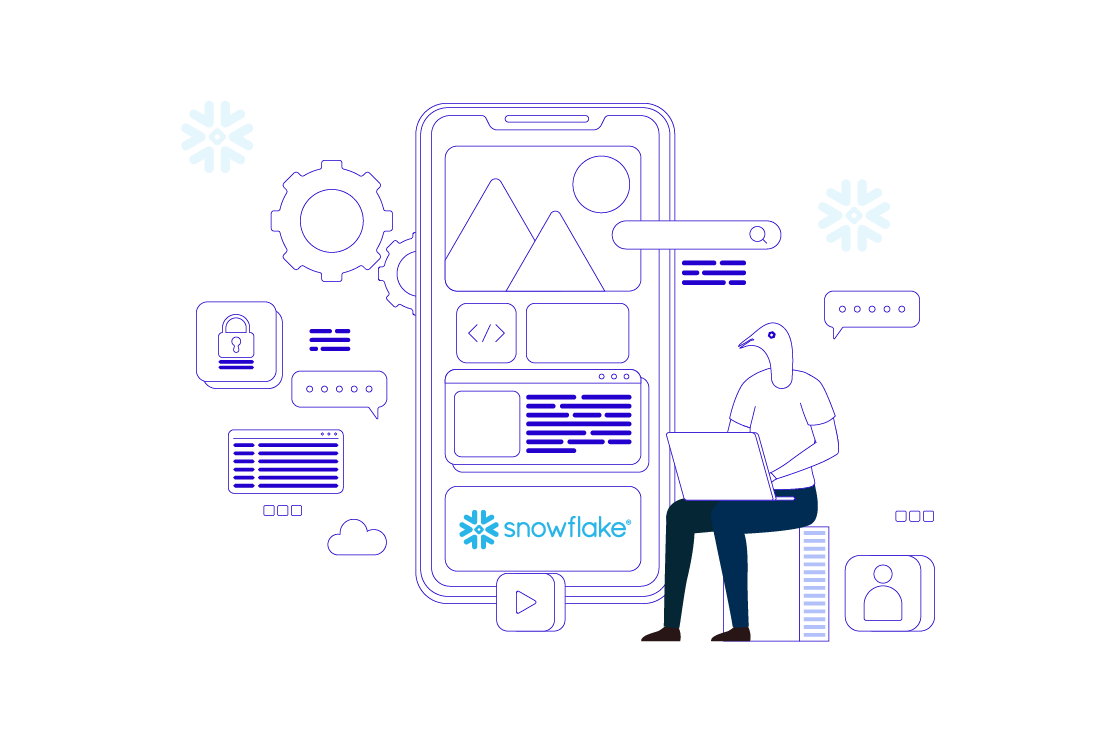
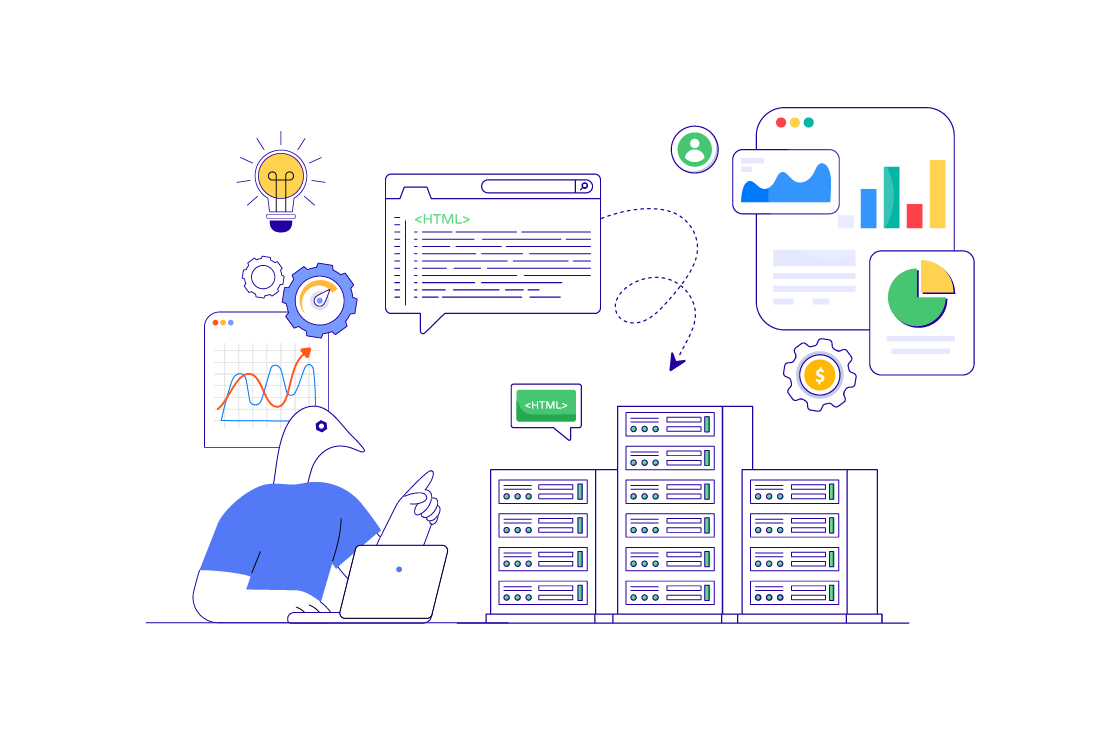 Empower Data Flow with Microsoft Fabric Connectors: A Quick Guide for Data Engineers
Empower Data Flow with Microsoft Fabric Connectors: A Quick Guide for Data Engineers 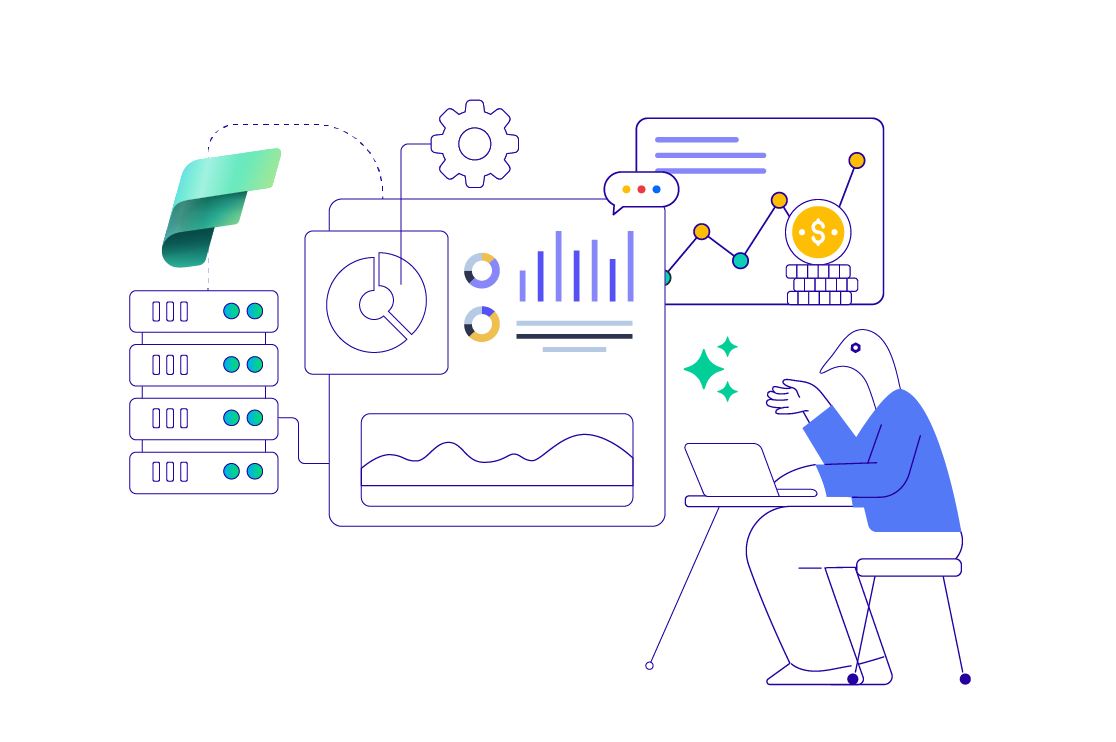 Build & Elevate Your Enterprise Data Strategy with Microsoft Fabric
Build & Elevate Your Enterprise Data Strategy with Microsoft Fabric 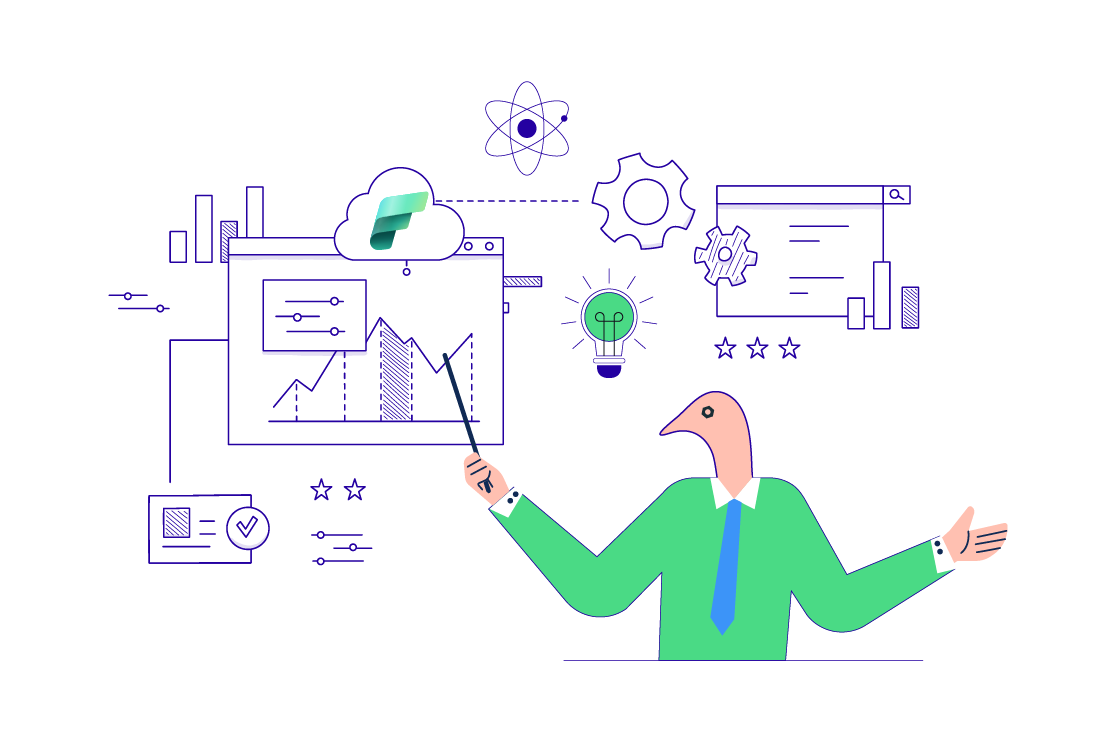 From Insight to Action: How Microsoft Fabric Powers Business Intelligence
From Insight to Action: How Microsoft Fabric Powers Business Intelligence 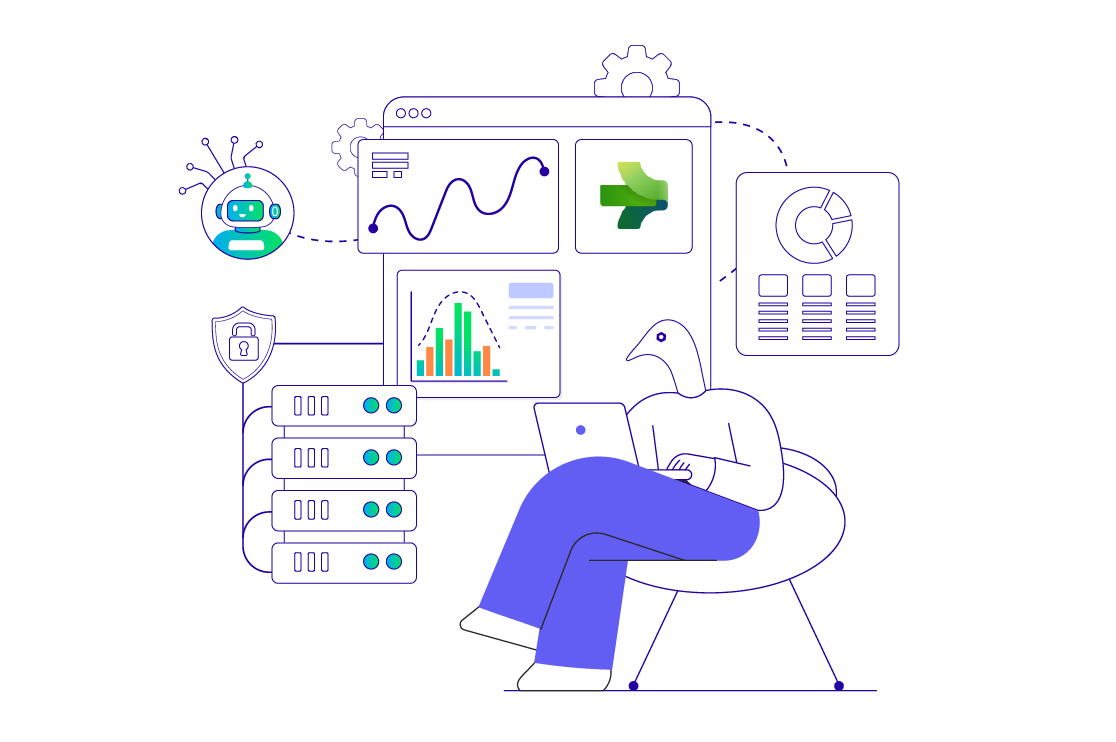 Microsoft Fabric Data Pipeline Management: Automate Your Enterprise Data
Microsoft Fabric Data Pipeline Management: Automate Your Enterprise Data 
